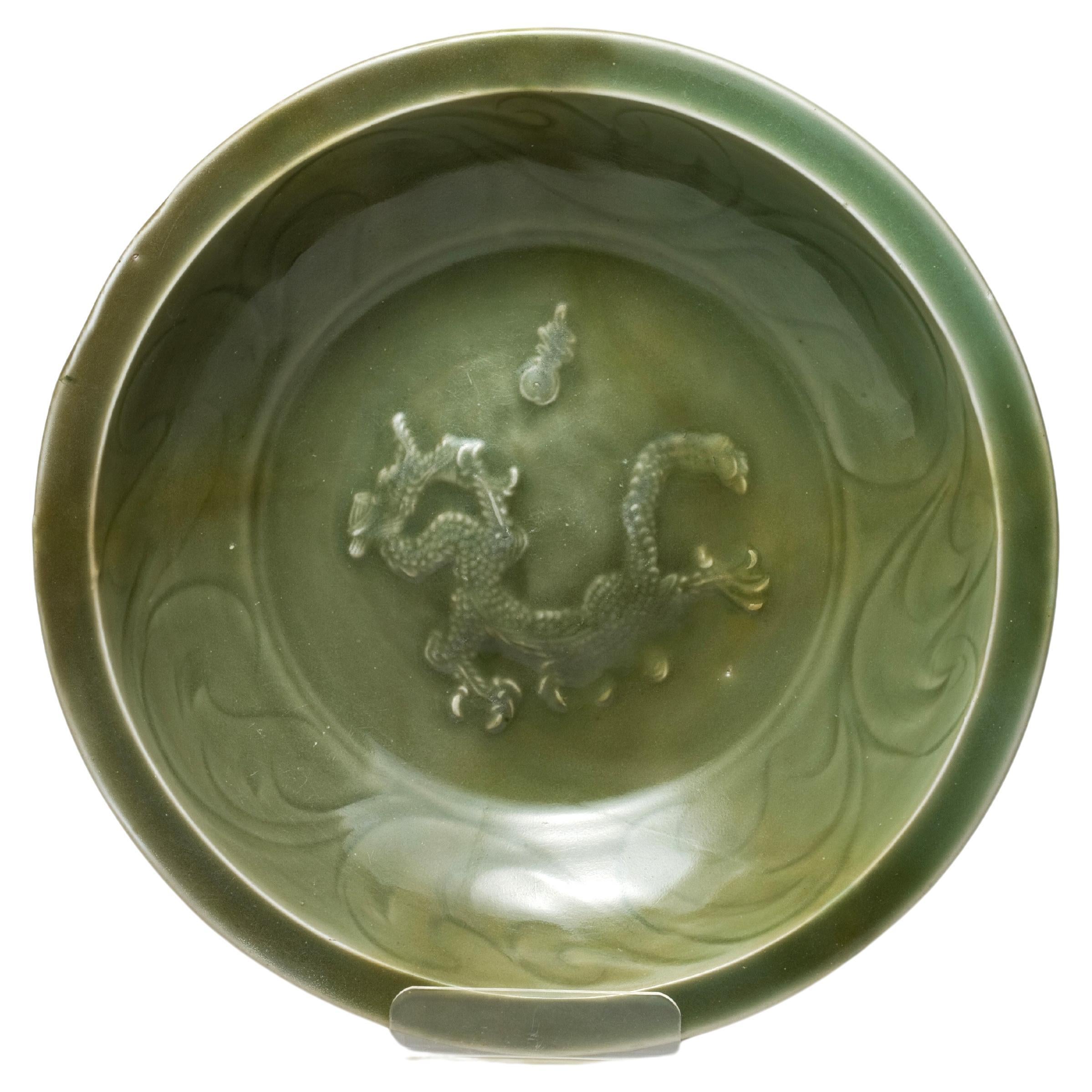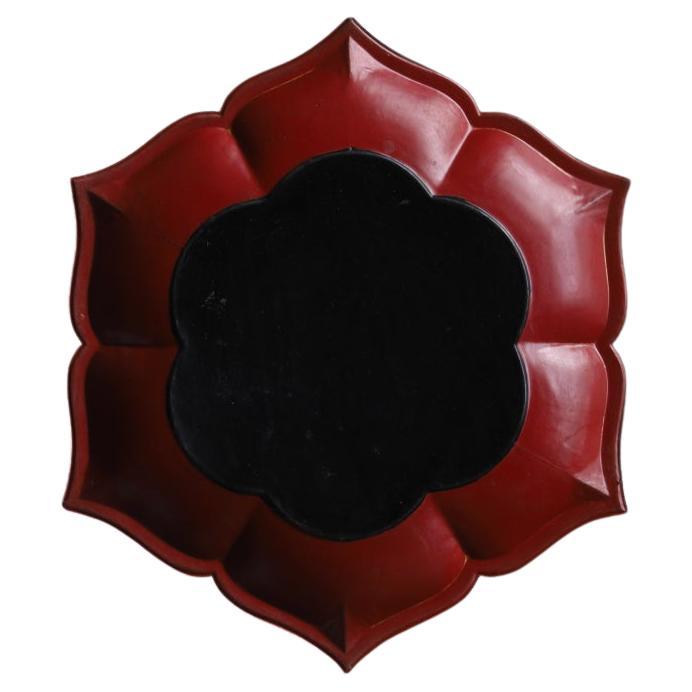Items Similar to White Ware with two dragons, Yuan Dynasty, 13-14th century
Want more images or videos?
Request additional images or videos from the seller
1 of 19
White Ware with two dragons, Yuan Dynasty, 13-14th century
About the Item
This vase is made from a type of low-fired, porous clay and features a crackled glaze. It bears resemblance to the renowned funerary vases and covers adorned with applied decorations.
Period : Yuan Dynasty(1271-1368)
Type : vase
Medium : Qingbai Ware
Size : 20 cm(Height), 7cm(Mouth Diameter)
Provenance : Acquired in late 1990s, Hongkong
Reference :
1) Smithsonian National Museum of Asian Art - Accession Number F1984.18
2) Ashmolean Museum, Oxford - Accession no.LI1301.295
* Qingbai Ware
Qingbai ware, which translates to "blue-white ware," is a type of Chinese porcelain that was made at the Jingdezhen and other kilns in the porcelain-producing regions of China, primarily during the Song dynasty (960–1279) and continuing into the Yuan dynasty (1271–1368). It is known for its translucent quality and the pale blue-green glaze that characterizes most of its pieces.
The qingbai glaze was achieved using a small amount of iron in a reduction-fired atmosphere, which produced the subtle blue-green tint. The body of qingbai ware is typically made of a fine, white porcelain that is often referred to as 'artificial jade' due to its resemblance to the esteemed stone. The thinness of the body and the high firing temperatures used contributed to the translucent quality of the finished product.
Qingbai ware includes a range of items such as bowls, cups, vases, and ewers. The designs are usually simple and elegant, with an emphasis on the graceful lines and form of the objects. Decorative motifs, when present, are often incised, carved, or molded in relief and can include floral patterns, dragons, phoenixes, and other symbolic elements drawn from Chinese culture.
Over time, the technology and techniques used to produce qingbai ware evolved, leading to innovations in glaze and decoration that would influence later types of Chinese porcelain. Despite these changes, qingbai ware remains a distinguished example of the potters' art in Song and Yuan China, reflecting the refined aesthetic and cultural values of the period.
- Dimensions:Height: 7.88 in (20 cm)Diameter: 2.76 in (7 cm)
- Style:Chinese Export (Of the Period)
- Materials and Techniques:
- Place of Origin:
- Period:
- Date of Manufacture:14th century
- Condition:Minor fading.
- Seller Location:seoul, KR
- Reference Number:1stDibs: LU9577239080662
About the Seller
New to 1stDibs
Joined in the past six months.
4.5
Vetted Seller
These experienced sellers undergo a comprehensive evaluation by our team of in-house experts.
Established in 1999
1stDibs seller since 2023
Typical response time: 1 hour
- ShippingRetrieving quote...Ships From: seoul, Korea South
- Return PolicyA return for this item may be initiated within 10 days of delivery.
More From This SellerView All
- White Ware Moulded Baluster Form, Yuan Dynasty, 14th centuryLocated in seoul, KRThis vase is made from a type of low-fired, porous clay and features a crackled glaze. It bears resemblance to the renowned funerary vases and covers adorned with applied decorations...Category
Antique 15th Century and Earlier Chinese Chinese Export Antiquities
MaterialsCeramic, Porcelain
- A Carved White Ware 'peony' vase, Song-Yuan dynastyLocated in seoul, KRThe vase is raised on a slightly splayed foot and flanked on the tall cylindrical neck by a pair of mask handles. The body is molded with lotus scroll pattern between a floral scroll...Category
Antique 15th Century and Earlier Chinese Chinese Export Antiquities
MaterialsCeramic, Porcelain
- A Longquan Celadon-Glazed 'Dragon' Dish, Yuan DynastyLocated in seoul, KRThe dish is decorated to the centre with a moulded appliqué dragon chasing the flaming pearl surrounded by a carved stylised foliage band at the cavetto. The moulded fluted exterior ...Category
Antique 15th Century and Earlier Chinese Ming Antiquities
MaterialsCeladon
- A Cizhou Yuhuchunping, Yuan DynastyLocated in seoul, KRThis piece has a flared neck and a globular body, typical of the forms seen in Cizhou ware. The body is decorated with freely drawn floral motifs and abstract patterns, which may inc...Category
Antique 15th Century and Earlier Chinese Chinese Export Antiquities
MaterialsStoneware
- Cizhou slender meiping, Yuan DynastyLocated in seoul, KRThe elongated body is fluidly painted in brown on a white slip and under a clear glaze with a broad band of abstract floral scroll between a band of upright petals below and further ...Category
Antique 15th Century and Earlier Chinese Other Antiquities
MaterialsStoneware
- Cizhou Rectangular Pillow with Carved Decoration, Yuan DynastyLocated in seoul, KRCizhou ware is known for its robust forms and freely applied decoration, often featuring a white slip under clear glaze. The pillow is rectangular, with a slightly curved top surface...Category
Antique 15th Century and Earlier Chinese Ming Antiquities
MaterialsPottery, Stoneware
You May Also Like
- Vermillion Lacquer Rinka Tray/Chinese Antique/14th-17th century/Tea wareLocated in Kyoto-shi, KyotoThis product is a rare six-sided vermillion lacquer rinka (ring of flowers) tray. It was made in the late Yuan and early Ming dynasties. It has been ca...Category
Antique 15th Century and Earlier Chinese Antiquities
MaterialsWood
- Two Pieces of a Pair of Encrusted Cizao tradeware from Fujian, 13th/14th centuryLocated in Chicago, ILTwo pieces of a pair of encrusted rare Cizao tradeware vessels from Fujian. These items were made for export to Southeast Asia. Southern Song to Yuan Dyn...Category
Antique 15th Century and Earlier Chinese Antiquities
MaterialsPottery
- 13th/early 14th C' Sukothai Walking Buddha, 8993Located in Ukiah, CAAll time favorite, and the first Buddha I have not wanted to post for sale in many years, as my heart melted the first time I laid eyes on him and I wanted to claim him for my own. He is the best of Thai sculpture- EARLY (13th/early 14th C) Sukothai Walking Buddha...Category
Antique 15th Century and Earlier Thai Antiquities
MaterialsBronze
- Lopburi Style Cast Bronze Figure of Uma, 13th-14th Century, ThailandLocated in Austin, TXA charming and unusual cast bronze figure of the Hindu goddess Uma, Lopburi Style, 13th-14th century, Thailand. Uma, the Hindu goddess of love and beauty, also known as Parvati, i...Category
Antique 15th Century and Earlier Thai Sculptures and Carvings
MaterialsBronze
- Rare Chinese Buddhist Altar Table, Yuan Dynasty, 14th CenturyLocated in Prahran, VictoriaRare Chinese Buddhist altar table made from bai-mu cypress wood with an elaborate, deeply carved and pierced relief. It also features a floral apr...Category
Antique 15th Century and Earlier Chinese Other Furniture
MaterialsCypress
- Jun Ware Vase with Red Glaze and Dragon Ears / Chinese Antiques / Qing DynastyLocated in Kyoto-shi, KyotoJun ware's red glaze is made with copper red glaze and applied to the surface of porcelain before firing. Due to the high temperature at which the glaze is fired, copper oxide precip...Category
Antique 18th Century Chinese Antiquities
MaterialsCeramic, Porcelain
Recently Viewed
View AllMore Ways To Browse
Pale Fire
1920 Art Deco Vase
Leaf Extendable
Studio Handmade Gold
Golden Lacquer Furniture
Small Table Small Dining Table Round
Mid Century Modern Industrial Chair
Country Style Ceramics
Arts Crafts Rug Mid Century
Unknown 1960s French
Outdoor Aluminium Table
Olivier Olivier
Revival Egyptian
Vintage Painted Iron Furniture
Gold Carved Gold Wood Mirrors
Mediterranean Style Rug
Vintage Regency Style Table
Large Brass Side Table





